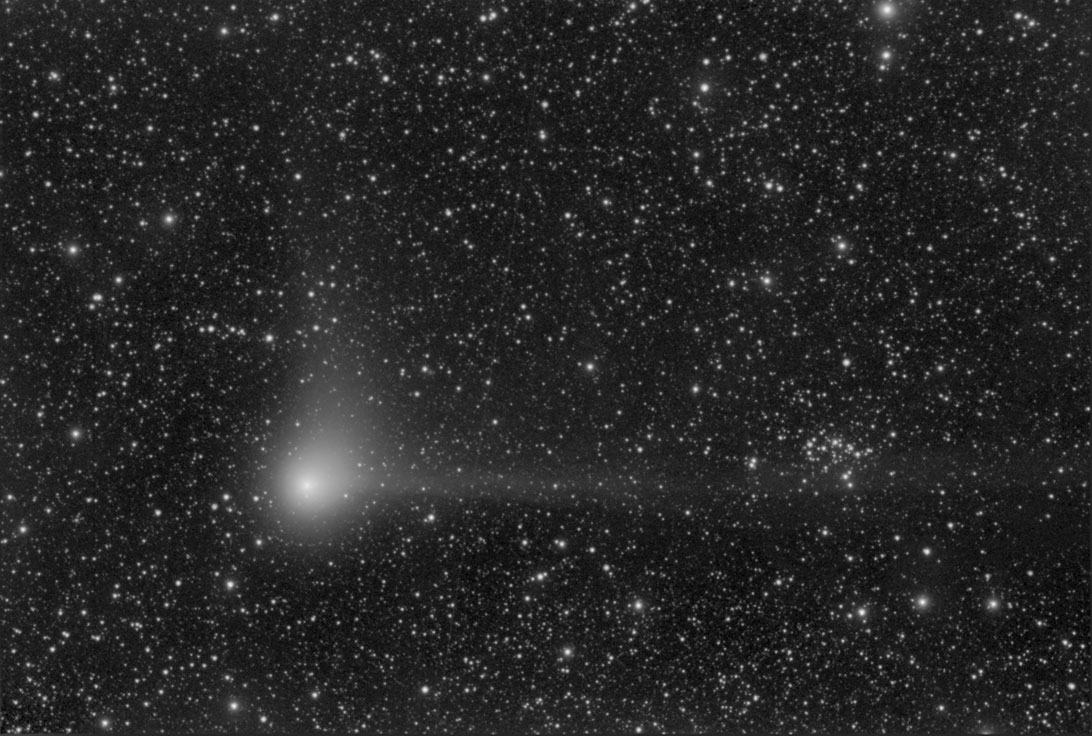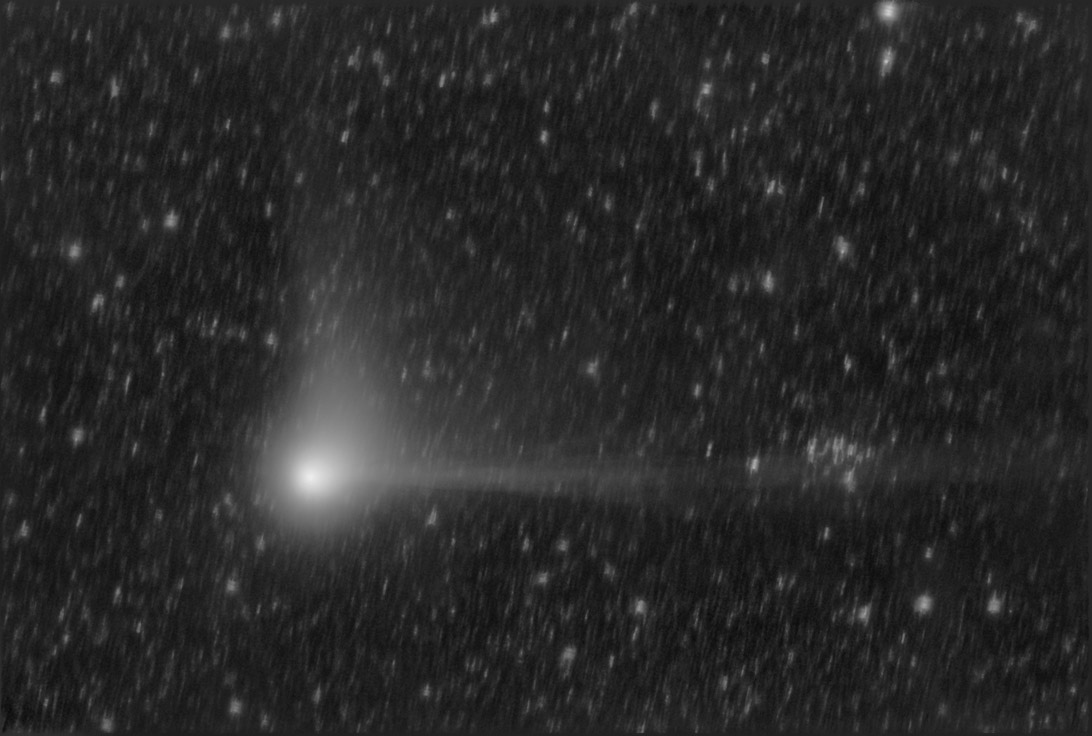

Conditions: acquired at my observatory in Denmark, on Jan. 14, 2005. A 4 day old moon was setting, astronomical twilight had just ended. Temp. ~1 deg. C, weak western wind, partly cloudy, average/poor transparency. Later in the evening the weather and darkness improved a lot but by then I had moved on to deep sky H-alpha imaging.
Setup: Nikon 180 mm F2.8, DF-2 focusser, IR reject filter, ST10XE, MaximDL/CCD, Takahashi EM-10 mount (check out a mechanical description and a view of this setup)
Exposure time: 7x50 sec. (top image), 13x200 sec. (bottom image).
Processing (Mira, MaxIm, Photoshop): dark subtracted, flat fielded, de-bloomed, masked hot/cold pixels, removed gradients, registered (top image: on stars, bottom image: following the comet), combined (top image: mean, bottom image: median), digital development filter, levels&curves, reduced 50% for web format
I found the processing of these images quite challenging. Gradient removal is hard work and I am not very good at it. The motion of the comet (5 arcsec/minute = 0.6 pixel/minute) meant that I either had to register the images on the stars (top image) or on the comet (bottom image). I wish comet Machholz could stand still while having its picture taken..! I used a median combine when stacking the images registered on the comet, this reduces the brightness of the star trails by a factor of ~20, at the expense of making them more fuzzy and irregular.
Note the two tails of the comet: the ion tail extends to the east covering the open cluster NGC1342, while the dust tail pointing south is
more stubby. Especially after the moon had gone down the comet was a fine visual object for the unaided eye, through a binocular
(sorry, Michael!) and a 8" SCT.
Here's my main page where you can see more of the pictures I have taken so far.
Comments greatly appreciated! (mikael@leif.org)